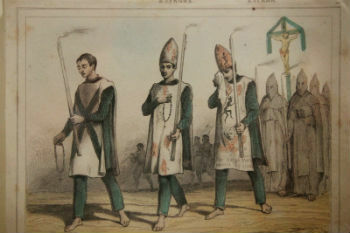The first bishop of Brazil was Dom Pero Fernandes Sardinha, who arrived in Salvador in 1551 from Portugal. Its trajectory was marked in the history of Brazil for having been, according to some controversial reports, devoured by Indians caetes, in an anthropophagy ritual, on the coast of northeastern Brazil, in 1556. THE anthropophagy it was the practice carried out by some Indian tribes of eating men imprisoned or caught during wars. Anthropophagy is also known as cannibalism. the death of bishop sardine it may have occurred in one of these anthropophagy rituals.
Bishop Sardinha tried to control the actions of Portuguese settlers who came to Brazil during the first years of Portuguese colonization. He tried to combat, for example, the habit of smoking, acquired with the indigenous people, as well as trying to prevent the Portuguese from having sexual relations with the indigenous people.
at the time, Duarte da Costa he was governor general of Brazil. His son, Álvaro da Costa, was a violent man who used force to intimidate mainly the indigenous people. He was also one of those who had sexual relations with the indigenous people. During one of his sermons, Bishop Sardinha condemned the actions of Álvaro da Costa, which resulted in the beginning of a conflict between the bishop and the governor-general.
As he did not have the strength to face Duarte da Costa, Bishop Sardinha decided to return to Portugal to make his complaints directly to King D. John III. In 1556, Bishop Sardinha boarded the ship Nossa Senhora da Ajuda bound for Europe. But after having covered a few six leagues (24 km), his ship sank off the coast of the current state of Alagoas, near the mouth of the Coruripe river.
The bishop and about 90 other crew members managed to reach the coast, but when they were captured by the Caetés Indians, of a lineage close to the Tupinambás, they were devoured in an anthropophagic feast. Only three crew could have escaped and reported what happened.
The main narrator of the event was Friar Vicente de Salvador, and it is not clear whether the banquet actually took place. However, the death of Bishop Sardinha served as a pretext for the Portuguese to start a war against the Caetés. In five years of conflict, the Portuguese exterminated around 80,000 caetés and began to colonize the region where they lived.
In this case, the anthropophagic ritual of Bishop Sardinha and the other castaways helped the Portuguese to start the war against the Caetés. It also served as the main theme of the Anthropophagic Manifesto, by Oswald de Andrade, who stated, with a metaphor, that only anthropophagy united Brazilians, since the formation of identity of the nation occurred after having devoured and swallowed (digested) the European, African and indigenous peoples.
Oswald de Andrade wrote his Anthropophagic Manifest in the year 374 of Bishop Sardinha's Deglutition.
By Tales Pinto
Graduated in History



